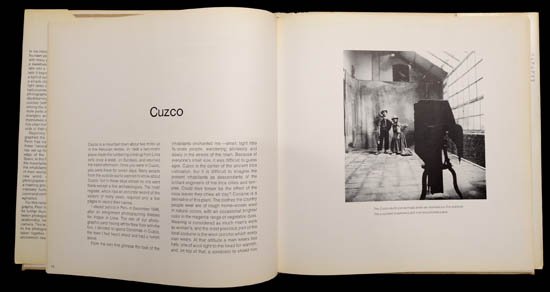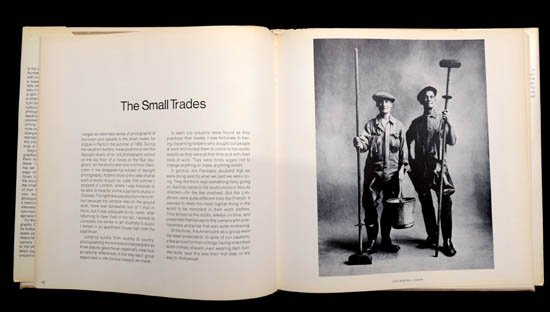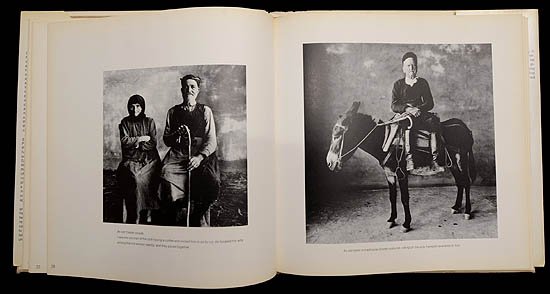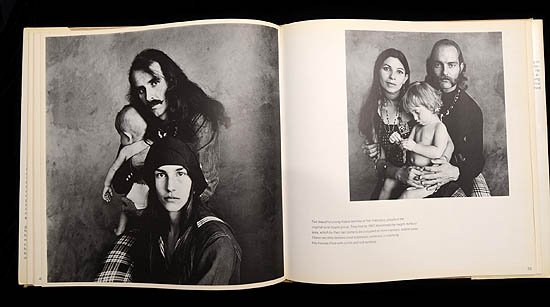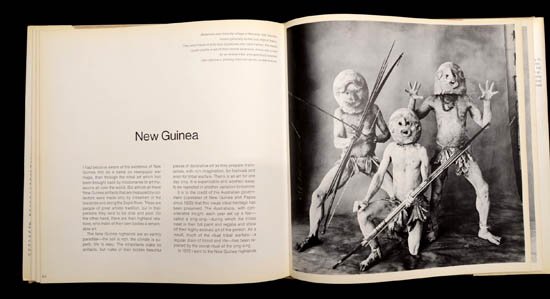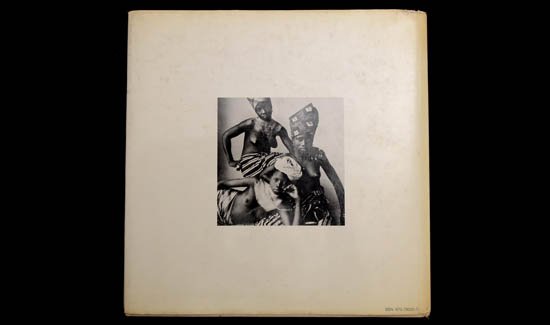Worlds in a Small Room
By Irving Penn as an ambulant studio photographer
Grossman Publishers 1974
Out of Print
Reviewed by Tim McLaughlin
To this day, one of the most influential photobooks ever made is Irving Penn’s Worlds in a Small Room. It is noted for the photographs, which show Penn’s immaculate, premeditated style, his concern for geometry, and the balance of light and dark elements. But it is equally monumental for the profound way in which the photographer attempts to engage the world.
The elements of this engagement are present in Penn’s first project. Wrapping up a 1948 photo shoot for Vogue magazine in Lima, Peru, Penn chose to continue on to Cuzco while the rest of the crew flew home for Christmas. After three days in bed with altitude sickness, Penn woke on the forth day with renewed energy. Walking the streets in the centre of town he encountered a photographer’s studio with sheet glass for a roof and open on the north side, a daylight studio. Penn paid off the owner and rented the studio for three days. In an important reversal, Penn photographed the studio’s clientele, but rather than take money from the subjects, he paid them to let him take their photographs. The results are a powerful, evocative engagement with an unfamiliar culture. Edward Steichen has said the photos “richly render the timelessness and human dignity of a people.”
The advantages of a studio are isolation and control. What you can exclude, all the distractions of walls, trees, shadows, and clutter; and what you can introduce; controlled lighting, a sense of stability and intimacy. But there are other things that take place within a studio that are subtle, and they have everything to do with the relationship between photographer and subject.
The studio became, for each of us, a sort of neutral area. It was not their home, as I had brought this alien enclosure into their lives; it was not my home, as I had obviously come from elsewhere, from far away. But in this limbo there was for us both the possibility of contact that was a revelation to me and often, I could tell, a moving experience for the subjects themselves, who without words—by only their stance and their concentration—were able to say much that spanned the gulf between our different worlds.
In his early trips Penn would locate daylight studios such as those he found in Paris, New York, and London for his series “Small Trades.” During a 1964 trip to Spain, while working with a band of Gypsies, he tried to improvise such a studio in a barn:
I rented a barn from a nearby farmer and set up a daylight portrait studio; when the farmer found out who the subjects were to be, he was not at all delighted with the project, On the day planned for the photographs, I noticed that all the domestic animals had disappeared from sight—the farmer had locked the goats, the chickens, and even the cow in the house.
The gypsies’ response to my invitation was predictable. They whined and wheedled and made it seem that coming to the studio a mile away was a strenuous journey. We finally agreed on an exorbitant price, and a small steam of family groups presented themselves to be photographed.
As I had hoped there was a remarkable transformation in the relationship between us, which had been so tense and unpleasant during our negotiations at their encampment. I this makeshift studio, strange to both of us, I noticed for the first time in my experience with gypsies that I was treated by them as a person somewhat like themselves. The qualities of their own family relationships began to be visible for the first time. I was surprised at their consideration even tenderness, for each other, but most surprising to me was that some of this softness was allowed to go out to me. It was a revelation that fulfilled my hopes more than my expectations.
Over the years, Penn continued to take his ethnographic work further and further afield. His trips were commissioned by Vogue and took place in the golden years of magazine photography. He finally perfected a portable outdoor natural light studio with a custom built tent. This structure was 11 feet high and had a 10 x 18 foot floor. He augmented the set-up with an 8 x 12 reflective screen. Made of aluminum poles and nylon it was reasonably portable, could be set up quickly by a team of assistants, and could fit on the top of a jeep. On his photographic expeditions, Penn took five Rolleiflex twin-lens reflex cameras and a compliment of close-up lenses.
It is this set up that leads Penn to call himself an "ambulant studio photographer.” He used the tent to make what are perhaps his most famous photographs, the Makehuku men from the village of Mandow, known generally as the mud men of Asaro, New Guinea.
Photographs, it seems, never appear without a notion of truth attached to them. In the essay on Penn in Time-Life’s volume on "The Studio", the writer indicates that when the subjects entered the studio, the became their true selves “On its neutral ground they emerged as their real selves, human beings possessed on innate dignity.” Although Penn repeated emphasizes the transformative qualities of the studio, he is careful not to claim that the studio is any more “real” or “true” than the space outside. The difference is in the change in environment and a formality and seriousness the studio creates. Interestingly, it was the space outside the studio that was “real” for other photographers. Walker Evans, when he embarked on the New York subway with a hidden camera, claimed: “The guard is down and the mask is off … People’s faces are in naked repose down in the subway.”
Much time has passed since these portraits were taken. Irving Penn died in 2009 at the age of 92. Worlds in a Small Room contains travels to meet people from distant places and photograph them under ideal conditions. For Penn, the ideal conditions required the natural light of the north facing sky. It is a light with “sweetness and constancy” a light “of such penetrating clarity that even a simple object lying by chance in such light takes on an inner glow, almost a voluptuousness.” Penn’s vision for his project (a vision imagined in his New York studio almost seventy years ago) has come true:
These remarkable strangers would come to me and place themselves in front of my camera, and in this clear north sky light I would make records of their physical presence. The pictures would survive us both and at least to that extent something of their already dissolving cultures would be preserved forever.

